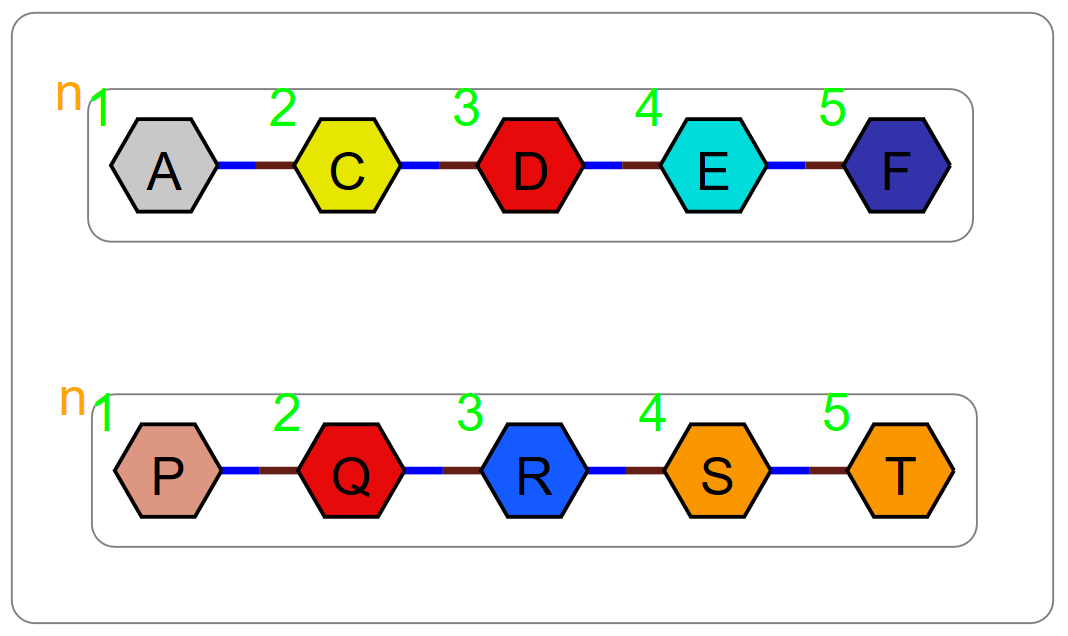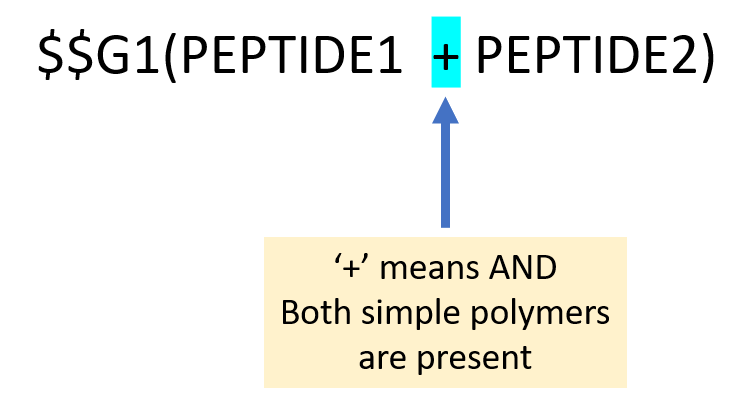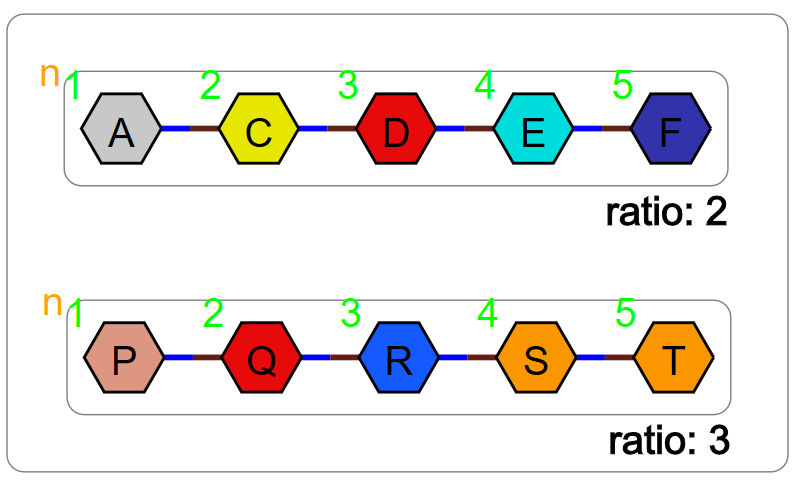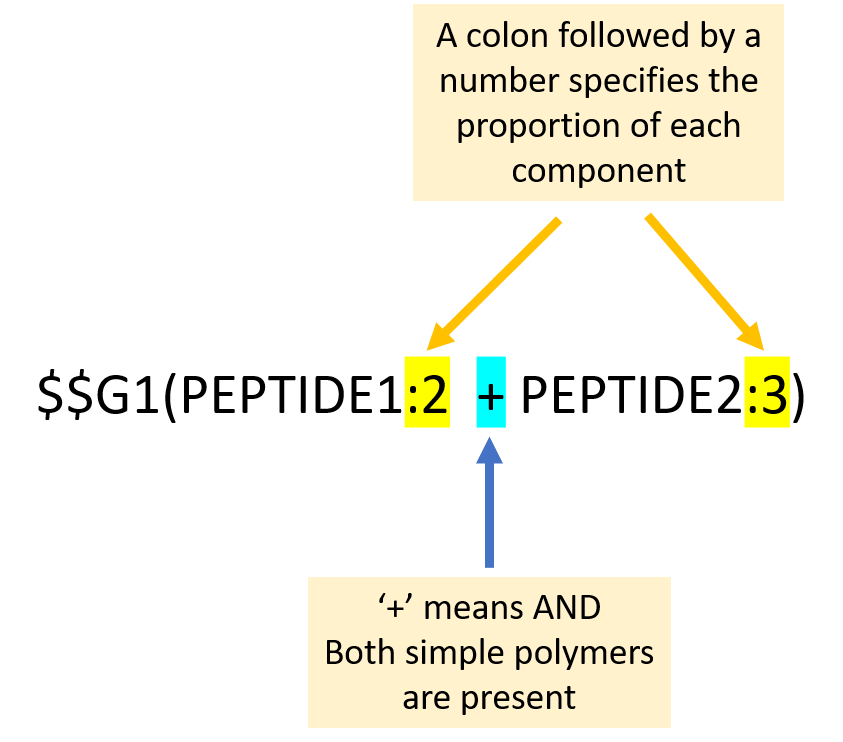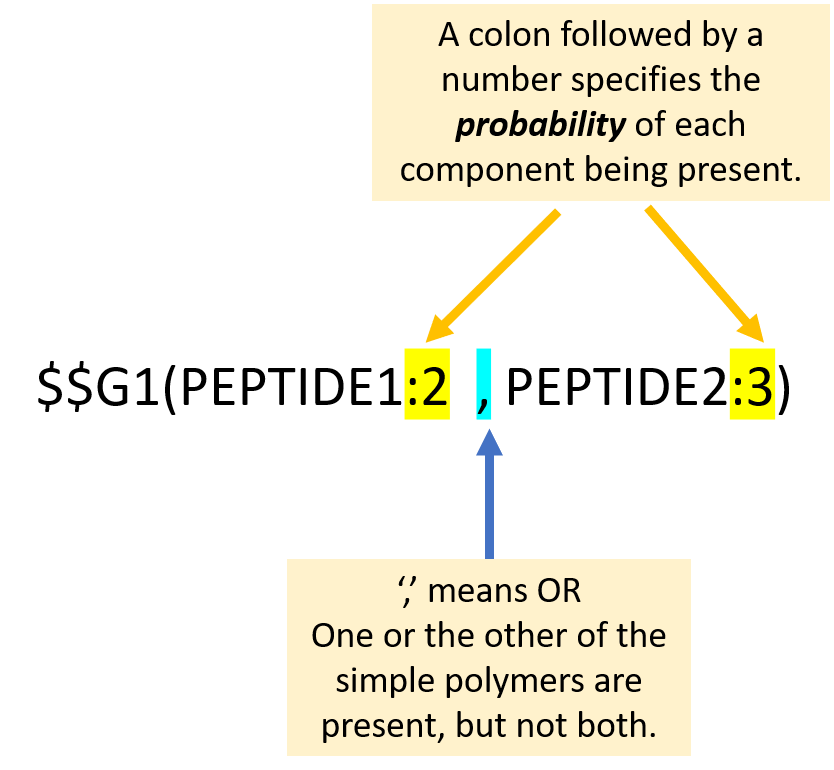Polymer mixtures and alternatives
Groups
Groups allow you to define molecules or sections of molecules. Once a group is created you can do many things with it - define ambiguous connections, annotate the group or define mixtures. We discuss mixtures and alternatives here.
Polymer mixtures
Polymer mixtures consist of more than one unconnected simple polymer. Every simple polymer is an implicit group but here they are organised into a higher-level group.
PEPTIDE1{A.C.D.E.F}|PEPTIDE2{P.Q.R.S.T}
$$G1(PEPTIDE1+PEPTIDE2)
$$V2.0
The mixture is defined in the third section:
You can see that the simple polymers are not connected as there is nothing in the second section of the string where the connection information would normally be.
Polymer mixtures containing different proportions
You can also specify how much of each simple polymer is present in the mixture:
PEPTIDE1{A.C.D.E.F}|PEPTIDE2{P.Q.R.S.T}
$$G3(PEPTIDE1:2+PEPTIDE2:3)
$$V2.0
If the proportions are not specified, then they are assumed to be unknown. Therefore a 1:1 mixture must be specified explicitly.
Probability/alternatives
If you believe that you only have one substance, however it could be either of two or more alternatives and you don’t know which, you can specify this in a similar way.
In this case, you separate the molecules using a comma. The comma becomes an OR operator.
PEPTIDE1{A.C.D.E.F}|PEPTIDE2{P.Q.R.S.T}
$$G3(PEPTIDE1:2,PEPTIDE2:3)
$$V2.0